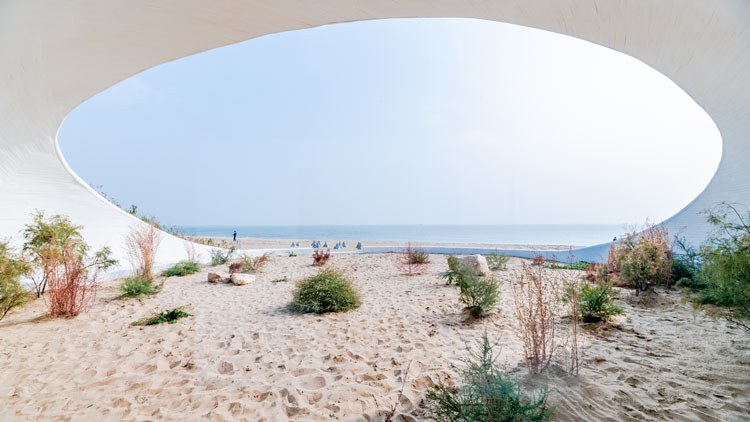Hebei's popular seaside spot Beidaihe has long been the location for the informal summer summits of China’s political elite. As of late last year, however, it was art being discussed, as Beijing’s Ullens Center for Contemporary Art (UCCA) unveiled its new museum overlooking the Bohai Sea,
UCCA Dune.

Designed by Li Hu and Huang Wenjing of OPEN Architecture, the unique structure of interconnected cave-like cells, embedded almost entirely within the wind-swept sand dunes of the shore, is a preservation of one of the few remaining sylvan slips of land designed to reflect the shape of the dunes in the area.
The interior of the space itself is a chain of rooms, explored through intimate tunnels, bright rooms punctured by single skylights, a turreted spiral staircase and nest-like outdoor galleries. Meanwhile, the entire structure – save for a few cavernous openings – has been sunk into the original topography, with the area restored by a covering of sand and local shrubs.
With development in China and along this stretch of coast itself showing no signs of slowing, UCCA Dune is an important example of environmentally sensitive building – even if it is still an environment supported by an enormous mass of concrete underneath all the sand. The museum’s inaugural exhibition, After Nature, deals with this rather depressing (but important to understand) paradox: the idea that the human footprint is now so prevalent that it is not only climactically but geologically inextricable from nature. Go see it for yourself until 7 April 2019.
By Helena Poole
